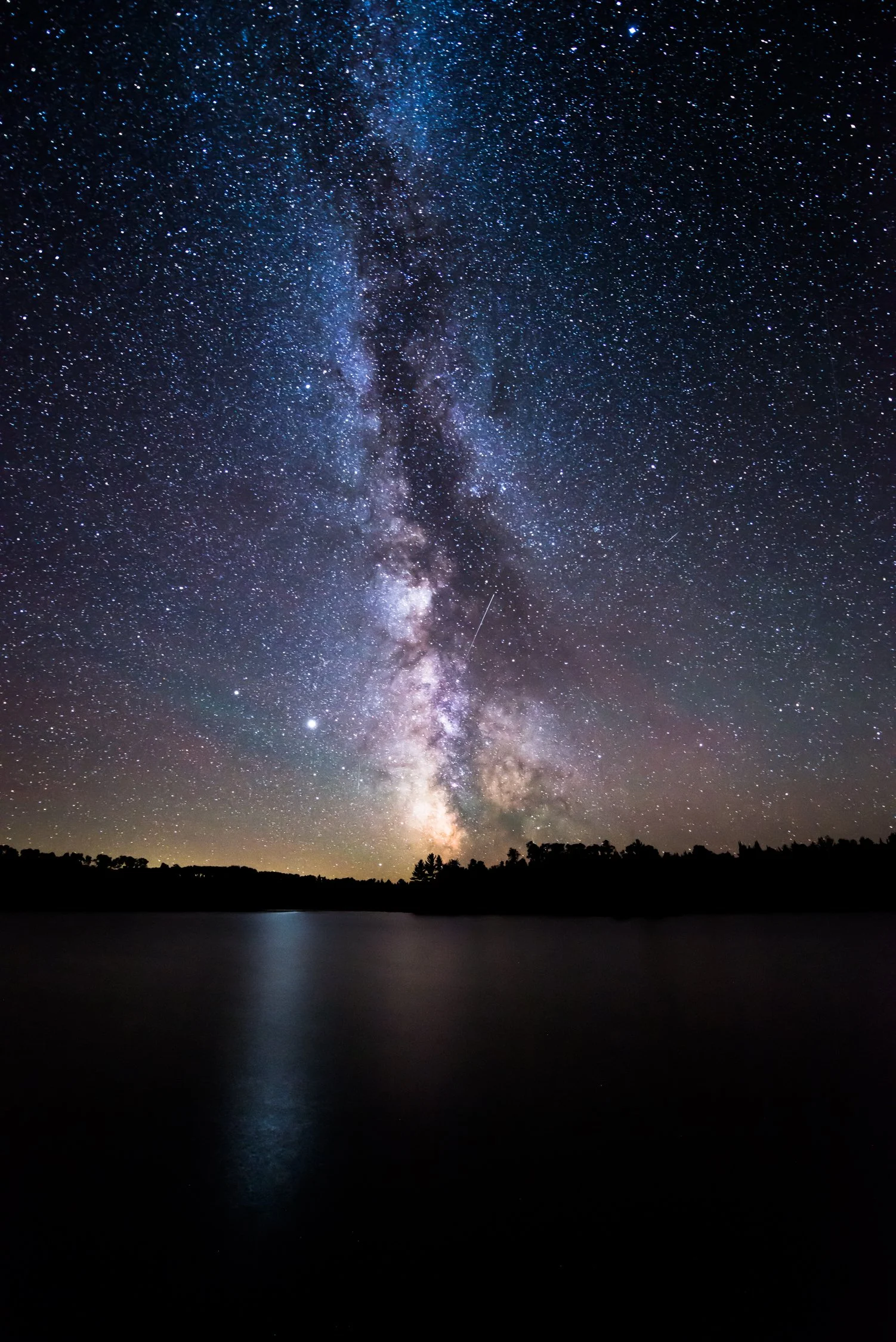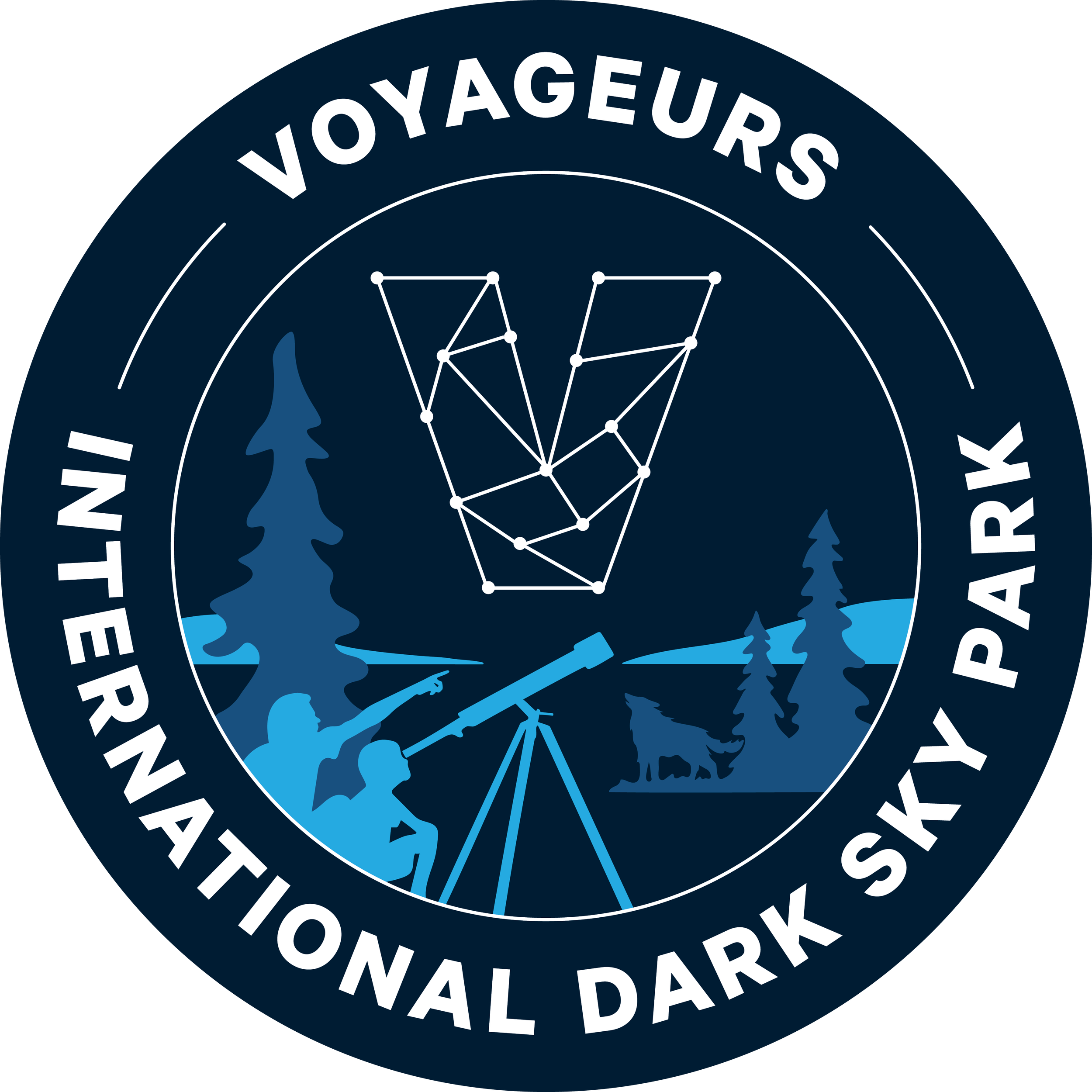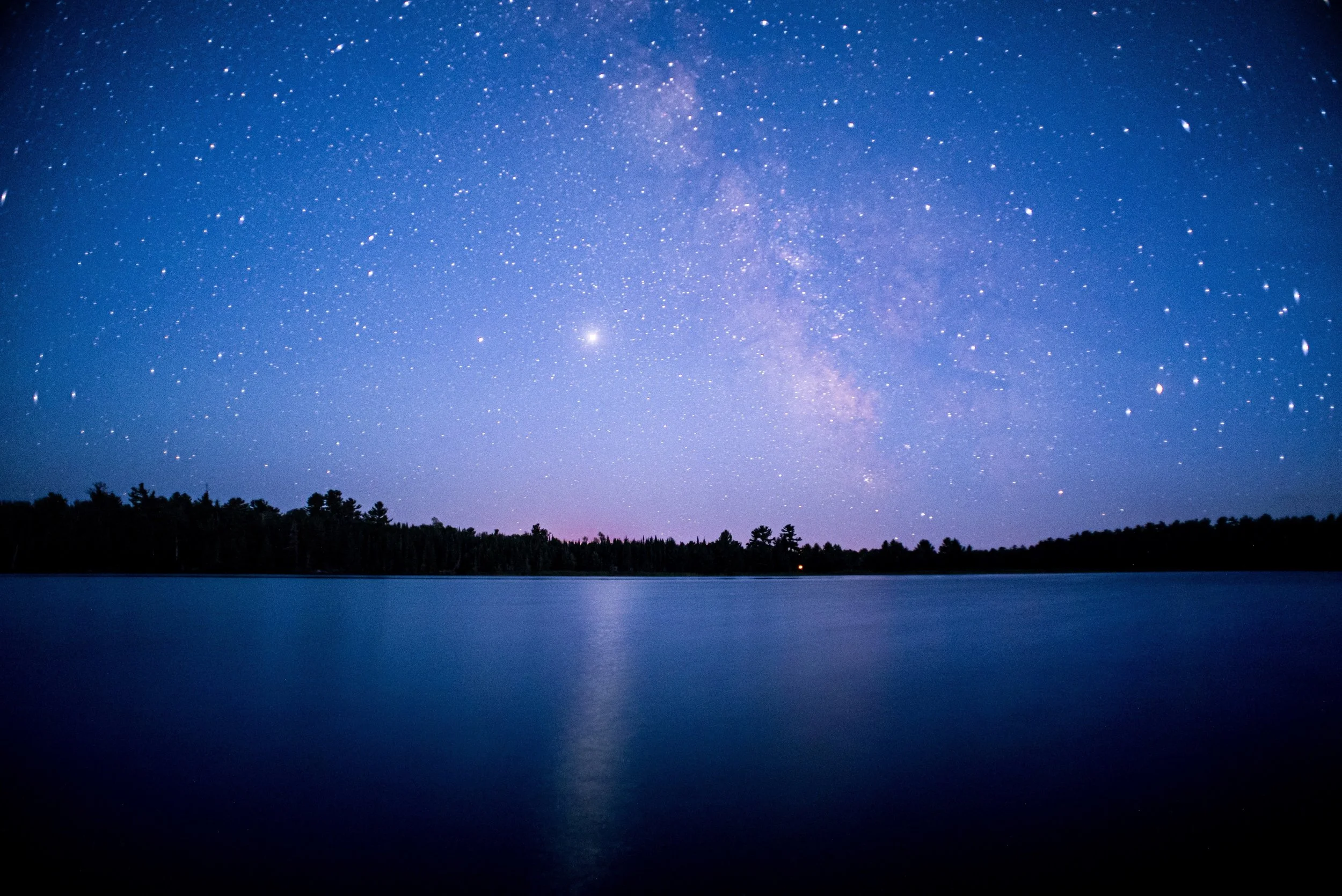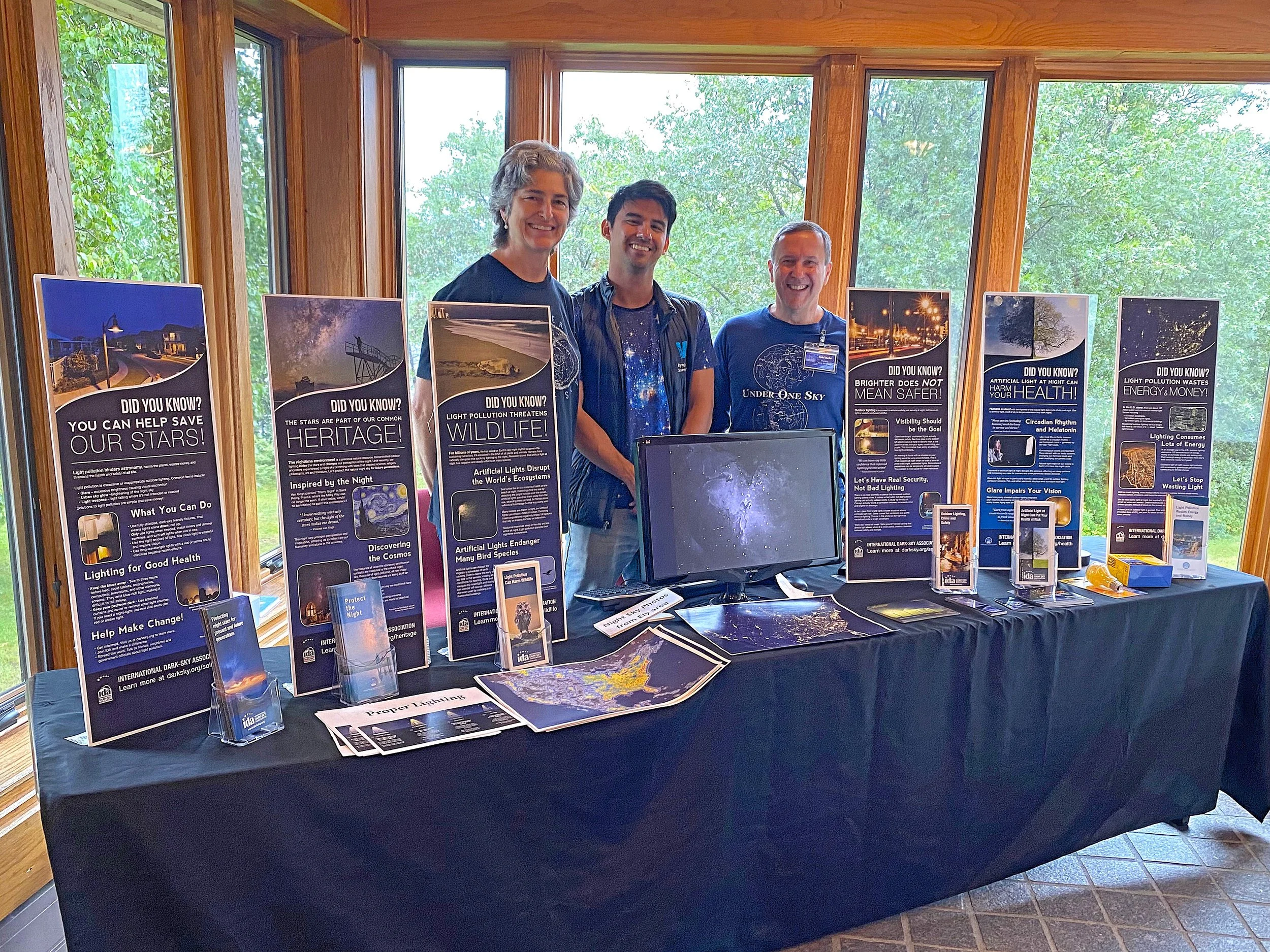
Dark Skies at Voyageurs National Park
Protecting and Sharing Minnesota’s Starry Skies
Voyageurs National Park is an oasis for astro-tourism and nighttime wonder. Year after year, thousands of individuals eagerly partake in Voyageurs dark sky programs and telescope sessions, stargazing boat tours, and virtual programming. Guided by astronomers and park rangers, these experiences offer unparalleled opportunities to connect to the night sky.
How do I experience an International Dark Sky Park like Voyageurs? Keep reading to learn where to stargaze, how to appreciate the scientific and cultural wonders of the night sky, and even catch the elusive Northern Lights!
Erik Fremstad
Where to View Dark Skies
With 218,000 acres of exceptional dark skies, Voyageurs offers many prime stargazing locations. To enhance your view, select a location with low light pollution (artificial light) and an open view of the night sky such as a fishing dock or open field. Here are a just a few spectacular locations to stargaze in Voyageurs National Park:
Rainy Lake Visitor Center:
Rainy Lake Fishing Pier: Located by the lower parking lot behind the public restrooms, this spot offers a tranquil setting to enjoy the night sky.
Park Sign off Hwy 11: A convenient stop that provides a clear view of the stars.
Ash River Visitor Center:
Voyageurs Forest Overlook: One of the darkest sites in the park! Enjoy views of the night sky with minimal light interference at this “Dark Sky Designated Area.”
Peninsula behind the Visitor Center: The rocky area near the visitor center provides an unobstructed view of the night sky,
Beaver Pond Overlook: A serene spot where the reflection of stars on the water.
Kettle Falls Dam:
Observation Deck: This platform offers a panoramic view of the sky, ideal for observing constellations and celestial phenomena.
Additionally, many of the park's lakeshores, clearings, and campsite docks provide wide, unobstructed views of the stars—especially if there is little or no artificial light nearby.
Gordy Lindgren
Experience an International Dark Sky Park
Certified by the International Dark Sky Association, Voyageurs National Park is Minnesota’s only International Dark Sky Park. These spaces protect crucial nocturnal habitat, abundant wildlife, and our universal connection to the night sky. This significant certification requires the ongoing preservation of extremely dark skies and a commitment to host inspiring night sky programs.
Park after Dark Programs
Voyageurs Conservancy and the National Park Service bring Voyageurs’ striking night sky to anyone’s fingertips. Together, we host constellation tours, stargazing events, and telescope sessions throughout the park and beyond. Our goal is to educate visitors and local partners about the importance of preserving natural darkness.
We hold several astronomy and stargazing events throughout the year including our weekly summer Park after Dark programs, annual Summer Star Party and winter Boreal Stargazing Week, and NPS-led stargazing boat cruises. Click here to see upcoming events celebrating dark skies at Voyageurs.
John Keefover
Catching the Northern Lights
Appearing as curtains of light, the Northern Lights (Aurora Borealis) are a brilliant natural light show and a true North Woods experience. The Northern Lights are caused by interactions between the sun's particles and gases in our atmosphere, resulting in a beautiful light display. These shifting magnetic and electrical forces make the aurora appear to dance across the night sky.
Will I see the Northern Lights at Voyageurs? This is one of our most commonly asked questions. Voyageurs National Park is one of the best places to view the Northern Lights in the continental United States. However, seeing the Aurora Borealis is not guaranteed as it depends on several factors including weather, geomagnetic activity, location, and the time of year. A Kp index of 4 or higher increases your chances of seeing the lights.
The best times to see the Northern Lights at Voyageurs are typically during the fall, winter, and spring. Longer nights provide a wider window for seeing this colorful phenomenon, and the earlier sunsets also allow you to begin viewing earlier in the night. Patience is key when it comes to viewing the Northern Lights. Keep checking the sky and enjoy the other celestial wonders that Voyageurs' dark skies have to offer!
Matt Ackermann
Why Does Dark Sky Preservation Matter?
Voyageurs National Park presents some of the most striking night skies in the nation. On a visit to the park, one can find themselves under a blanket of stars and discover constellations from the Ojibwe star map. The forests and wildlife of Voyageurs National Park thrive on the rhythmic cycle of day and night. Dark skies are not only a scenic wonder, but necessary for our ecosystems, human health, and preservation of cultural heritage.
However, dark skies are becoming scarce as technological advances have engulfed our skies with artificial light. The negative impacts of light pollution are increasing rapidly. The New World Atlas of Artificial Night Sky Brightness states that approximately 80% of North Americans are unable to see the Milky Way due to light pollution.
LIGHT POLLUTION
Light pollution is the inappropriate or excessive use of artificial light. This light doesn't just impede our view of the stars, it is also detrimental to the environment, wildlife, and human health. Light pollution harms:
Environment: According to the International Dark-Sky Association, artificial light has been found to alter breeding and foraging behaviors in wildlife species and affect the growth rate of trees. Light pollution is especially harmful for nocturnal birds’ flight patterns, whose predation habits rely on dark skies.
Human Health: Exposure to artificial light is also detrimental to our own health, as it disrupts the circadian rhythm. This results in poor sleep quality and weakened immune systems. Further impacts and links to disease are under study.
Cultural Heritage: The Ojibwe star map is culturally significant to Northern Minnesota. These constellations have stories associated with them and many correspond with seasonal changes. Light pollution erases the ability to connect with the constellations and these indigenous narratives.
Maintaining Dark Sky Park Certification
Voyageurs Conservancy and the National Park Service secured International Dark Sky Park certification for Voyageurs National Park in 2020. Today, the Dark Sky Initiative is a joint effort to preserve light pollution-free habitats for the species who call the park home, as well as efforts to expand business engagement and public education on the natural and cultural significance of Northern Minnesota’s dark, starry skies.
Sustaining Voyageurs National Park’s International Dark Sky Park designation is a rigorous effort involving year-round efforts. A place can lose its certification if light pollution in the area grows past a certain threshold, impacting the park’s darkness readings. Learn how we work together to keep this prestigious certification from the International Dark Sky Association:
Light Fixture Changes
Existing lighting in the park is retrofitted to reduce light pollution and preserve habitats for the wildlife that call Voyageurs home. To date, over 87% of the park’s light fixtures are dark sky friendly - with the goal to reach 100% in the coming years.
Community Engagement
Our Dark Sky Initiative brings Voyageurs’ boundless night sky to anyone’s fingertips. Voyageurs Conservancy education specialists host constellation tours and telescope sessions in the summer and special winter stargazing events. Our goal is to educate visitors and local partners about the importance of preserving darkness.
Data Collection
National Park Service staff travel to five locations throughout the park to record the luminance of the night sky using a Sky Quality Meter. The darkest possible sky measures 22.0 on the SQM and Voyageurs’ skies average 21.45 - signaling incredibly dark skies!
Inspiring the Next Generation:
Our Dark Sky Programs reach beyond the park’s borders. The Conservancy brings the wonder of Voyageurs’ night skies to students across the country through its virtual Dark Sky Classroom. Over 75,054 students from over 36 states have benefitted from virtual Dark Sky Classroom programs
Dark Sky Partnerships
We are proud to collaborate with other protected areas and dark sky advocacy groups including Starry Skies North IDA, Friends of the Boundary Waters, Superior National Forest, and more. Together, we promote education and citizen science opportunities for the public.
You Can Help Protect the Night
If you are inspired by Voyageurs National Park and wish to preserve its brilliant starry skies for future generations, please consider a gift to further this impactful work. No matter where you live, you can help reduce light pollution. Here are some easy-to-implement suggestions from the International Dark-Sky Association:
Light only what you need
Use energy efficient bulbs and only as bright as you need
Shield lights and direct them down
Only use light when you need it
Choose warm white light bulbs
Encourage your neighbors to do the same










